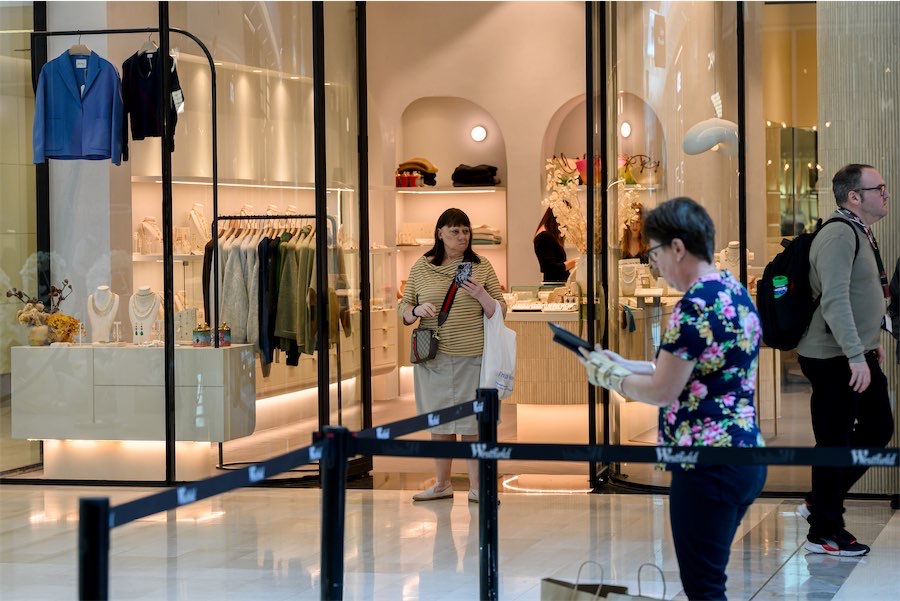IT’S the specific behaviours that occur in the home that are the single most important determinant of a child’s health and wellbeing.
That’s why I think parenting is a public health issue; it’s the modern day equivalent of safe drinking water.
We know parenting has this major influence, however it remains the elephant in the room when it comes to child wellbeing. But I think it’s time that the private business of parenting demanded public attention – parents, I think, want to do their best, and are sick and tired of feeling stressed and guilty, children are saying they want things changed – what sort of game changers are needed to address the situation?
The starting point, I think, is to properly understand parenting in Australia. The funny thing is, for the most important determinant of a child’s wellbeing in Australia, we lack a national parenting dataset. That said, we do have some good indicators:
Reading to children is a great measure of not only future literacy skills but also parent – child attachment – we know that in the most disadvantaged families, around 40-50 per cent of children are not read to at all, compared with only 15-20 per cent of children from the most advantaged families.
Similarly, talking with children from a very early age is critical to their development. The brain develops through use. But we know that in disadvantaged families, children hear around 600 words per hour. Whereas in those advantaged families, children hear around 2000 words per hour.
This means that by the age of four, a child from a poorer family could have heard 32 million words fewer than their classmates, placing them at a distinct disadvantage at kindergarten.
Shared mealtimes is another good indicator – there is good evidence to show that young people who have regular family meals report better grades in school, are more motivated at school, and get along better with others.
On the other hand, those who do not eat regular family meals together are more likely to smoke cigarettes, drink alcohol, use other drugs and are more likely to report feeling depressed or having trouble at school.
In Australia, around 71 per cent of students aged 15 years and 65 per cent of indigenous Australian students aged 15 years reported eating the main meal of the day with parents more than once a week. So this means that around 30 per cent of children aged 15 in Australia only eat meals with their parents once a week or less.
So, assuming you can find the time – when we look at stats on parents spending time “just talking” to their adolescent children, we know that around 50 per cent of students aged 15 years and 52 per cent of indigenous Australian students say that their parents spend time just talking with them about things that are important to them.
So this means around half of all 15-year-olds in Australia go for at least a week without just talking with their parents about things important to them.
While some of these stats are surprising, I’m very conscious that we need to be very careful not to blame parents here.
It’s time that we recognised the fact that parenting is the most important determinant of a child’s wellbeing, and the future of Australia.
I think there is a lot more that can be done to enable parents to do the best they can, and to build self-efficacy and resilience. Having quality time early on, for example through paid parental leave, is a fantastic (evidence-based) start, but we need to seriously ramp-up these sort of initiatives if we are to have a significant impact.
SO what is the best way forward??
We need a new way of empowering parents – avoiding punitive approaches to building strengths, capacities and resilience of parents, to make it the norm to seek assistance, rather than such assistance being seen as a sign that you have failed your children, or that you have been forced to seek help because you are a “bad parent”.
We also need to take a step back and focus on a long-term systemic reform toward tackling poverty and extreme disadvantage, to improve social mobility and reduce the gap between those families with access to resources and support, and those that don’t.
To achieve an integrated and empowering approach, through facilitating self determination to help improve the wellbeing of Aboriginal children and young people, we need to fill the huge policy gap for the 0-3-year-olds – we basically have no response to the needs of children in this age group – we wait until kindergarten or pre-school to do something. This is the most important time of a child’s life.
Likewise children in the middle years of childhood. Improving service quality of non-government organisations, through creating a stronger culture of evaluation in services, and taking the guesswork out of what is delivered to improve child and youth wellbeing. And all the time, focusing on the whole child, aged 0-24, and using child rights and wellbeing as the compass for determining action.
WHEN you compare Australia to other developed countries, you may be surprised to know that we don’t lead the world at all.
In fact the ARACY report in 2008, one of the first to look at Australian children’s wellbeing in the international context, placed us middle of developed or OECD countries. A Save The Children Report was a little more pessimistic, placing us close to last, and various OECD and UNICEF reports between the ARACY and Save The Children report.
When we released it, I was surprised to hear people say “So what? Middle is pretty good!”. But you don’t hear people being comfortable with just middle results when we slip in sporting achievements (like the Olympics), or when we slip from our economic rating. Why so for children?
I believe that Australia is in a unique position to lead the word in child and youth wellbeing by 2020. We can learn from other countries experience to develop a unique Australian approach. But the constant bitsy, short-term, programmatic approaches to improving complex issues just won’t cut it if we are to improve things by 2020.
I think these are very difficult agendas for governments to lead – and as a society we should perhaps stop expecting them to do so. We need to be working together more in identifying and progressing sustainable solutions.
I want to see Australia in the top five in the world for meeting children’s rights and wellbeing, as we are with economic growth. Only by committing to longer-term change, and focusing on collaboration, evidence and prevention will we achieve that.
Who can be trusted?
In a world of spin and confusion, there’s never been a more important time to support independent journalism in Canberra.
If you trust our work online and want to enforce the power of independent voices, I invite you to make a small contribution.
Every dollar of support is invested back into our journalism to help keep citynews.com.au strong and free.
Thank you,
Ian Meikle, editor




Leave a Reply